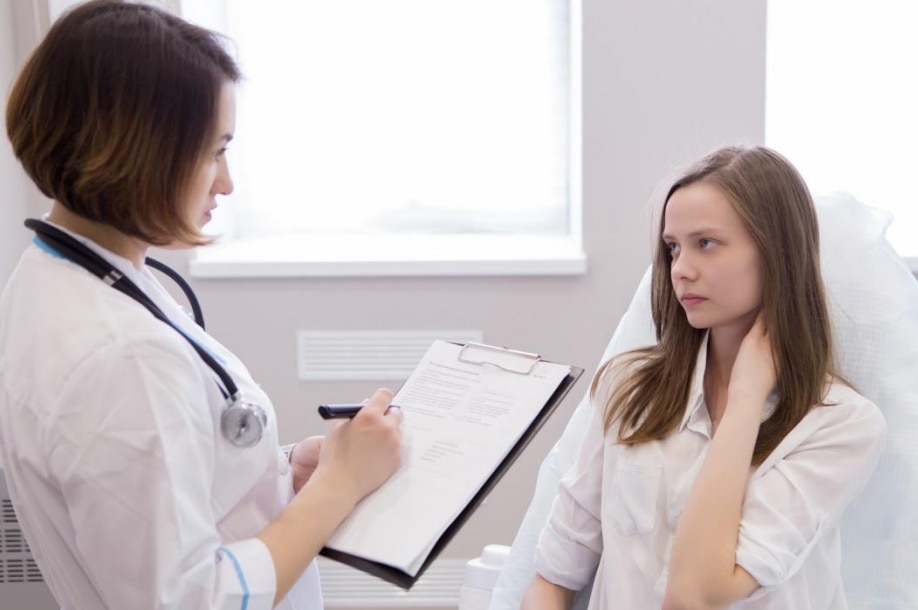Parents and Providers: Partnering with Healthcare Providers to Respond to Bullying
Bullying is a pervasive public health concern among youth in the United States. In 2015, approximately 1 in 5 students ages 12-18 reported being bullied at school during the school year, translating to millions of youth being impacted across the country. Because bullying is a form of aggressive behavior, it can be traumatizing and negatively affect children’s development, social functioning, educational performance, and mental and physical health. Kids who bully others often get into trouble – including physical fights – at school.
Effects of Bullying and Cyberbullying on Kids
Common Symptoms Stemming from Bullying
- Difficulty falling asleep or staying asleep
- Stomach upset or pain
- Headaches
- Heart palpitations
- Dizziness
- Bedwetting
- Physical symptoms not fully explained by a medical cause

Bullying typically happens in person or through electronic means, also known as cyberbullying. The Centers for Disease Control and Prevention defines bullying as:
Any unwanted aggressive behavior(s) by another youth or group of youths who are not siblings or current dating partners that involves an observed or perceived power imbalance and is repeated multiple times or is highly likely to be repeated. Bullying may inflict harm or distress on the targeted youth including physical, psychological, social, or educational harm.
While bullying may have been viewed as a rite of passage in the past, there is now evidence that bullying can have lasting, negative effects on health and wellbeing. Bullying is also recognized as a risk factor for suicide – now the second leading cause of death for teens. For this reason, bullying prevention is a significant focus in education and other places where children and adolescents often come together, like faith communities, summer camps, athletics, and after school programs – and in health care as well.
While any child can experience bullying, some are at higher risk. This includes children and adolescents who are socially isolated, who are overweight or underweight, or who are living with a disability, among other risk factors. Anything that might cause children or adolescents to be perceived as different from their peers could put them at increased risk of being bullied.
The Important Role of Healthcare Providers
Healthcare providers can be important allies in determining if a child is being bullied or why bullying behavior may have surfaced. Healthcare providers – including pediatricians, nurses, and physician assistants – can alert parents to signs – that bullying may be continuing, that their child might be depressed, and if it is affecting health or other aspects of life. They can offer supportive referrals to address health and mental health concerns.
Parents are often the first to notice some of the subtle shifts that take place with children or adolescents who are affected by bullying. Their child may talk less. They may isolate themselves from friends. They may have trouble sleeping or struggle academically. They may not want to go to school, to avoid further torment by the child who is doing the bullying. Noticing behavior changes can open avenues for conversation – an important first step to intervene.
Three Steps Healthcare Providers Can Take to Prevent
and Protect Children from Bullying
- Recognize (notice changes)
- Screen (ask questions)
- Refer (appropriate interventions)
Of course, sometimes parents may not know when a child or adolescent is experiencing bullying. If a parent suggests that a child may be depressed or struggling with something, the healthcare provider can have that important conversation that may reveal what is happening and if bullying is occurring.
If bullying is suspected, a healthcare provider may ask the child or adolescent about how school is going, their friends and what activities they do together, if bullying occurs at school, and what teacher or other adult would be safe to talk with if there is a problem. These questions can open deeper discussion to determine what might be most helpful.
There has been a trend to integrate behavioral health into primary care, including pediatrics – so when bullying is identified, sometimes a behavioral health counselor is available to assist right away. If not, the provider can make referrals to the appropriate services in the community.
The most important thing for parents to remember is that if they notice a shift in their child’s behavior or have concerns about bullying, they should reach out for help – and healthcare providers are caring resources that can provide effective relief, healing, and intervention.
Source and Research Limitations
The information discussed in this fact sheet is based on the comprehensive review of bullying research presented in the National Academies of Sciences, Engineering, and Medicine’s report entitled Preventing Bullying Through Science, Policy, and Practice.
This report includes the most up to date research on bullying, but it is important to note that this research has several important limitations. Most of the research is cross-sectional, which means it took place at one point in time. This type of research shows us what things are related to each other at that time, but cannot tell us which thing came first or if one of those things caused the other to occur.

